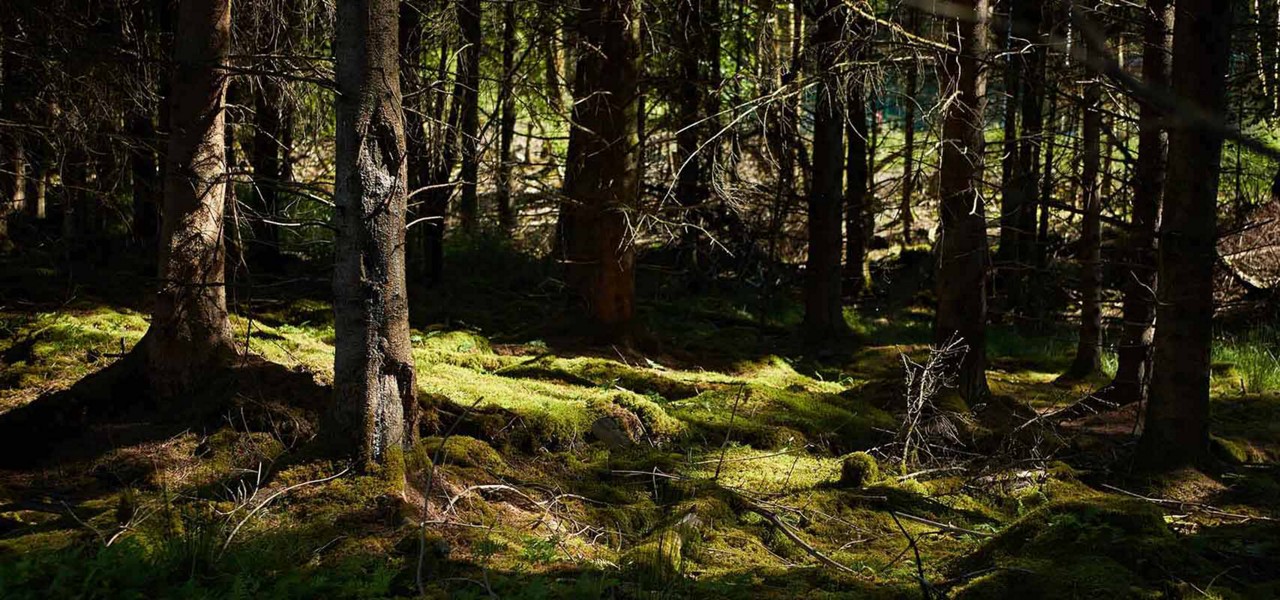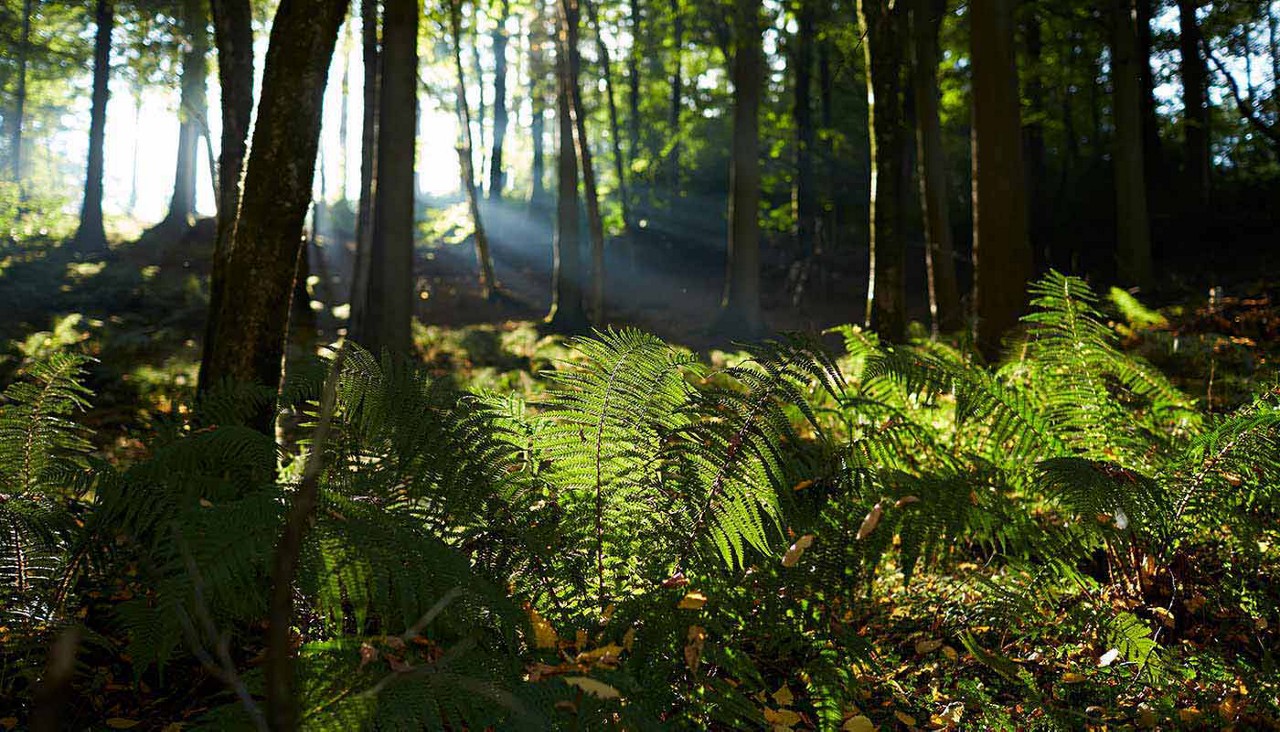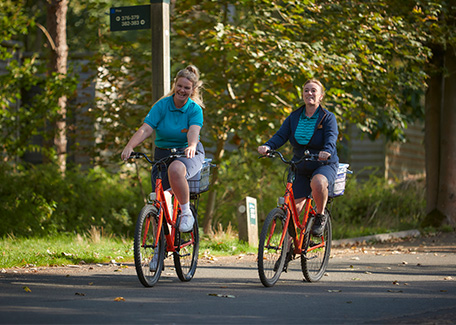Our commitment to biodiversity has been evident right from our very beginnings in the UK. When Center Parcs Sherwood Forest opened in 1987, we observed significant ecological benefits from opening up pockets of commercial forestry plantation. This meant that light was able to reach the forest floor for the first time in decades, dormant seed banks and pioneer species became established and began to flourish and, by opening up small areas of woodland around each lodge, we have been able to nurture and maintain the woodland and grassland habitat within the forest. In addition, adding waterways and lakes created new habitats, in particular aquatic and water margin habitats, and undertaking a planting programme of scrub, hedgerow and screen planting created habitats for breeding birds and invertebrates.
All our villages were previously ecologically poor commercial forestry plantations or estate-managed forest. They are now thriving habitats, home to a diverse range of both flora and fauna.
Biodiversity action plans and targets
Our biodiversity action plans are created in collaboration with our colleagues and key stakeholders. Each action plan includes habitat statements (the habitat types present), performance indicators for biodiversity, and progress against these targets. They ensure that our core operations are carried out in a way that actively supports the biodiversity potential of our forests, with a focus on maintaining diversity of habitats and creating biodiverse and beautiful forests through forest management. Performance against these targets is evaluated annually and the data collected is analysed and evaluated to shape future Forest Management Plans and maintain a comprehensive database of ecological information for each of our villages.
Each village has a dedicated team responsible for managing the forest and individual habitat types, led by a Senior Conservation Ranger with extensive technical and practical experience. We are always working to increase the skills and knowledge of our teams, supported by specialist ecology services where needed.
We invest in our people, so that we can invest in our woodlands.
The baseline for these targets was established through the completion of a number of surveys, including breeding bird, badger sett, reptile, bat, and botanical surveys. The surveys are completed with support from local surveyors, such as the local branch of The Wildlife Trusts. In addition, we periodically assess our own species and habitats in relation to the surrounding landscape to see whether we can contribute to the development or continuation of natural ‘corridors’ for species.
Each village has a bespoke Forest Management Plan, taking into account the unique features of the forest. The below examples are relating to Woburn Forest in Bedfordshire.
The habitats surrounding our lodges are biodiverse and include woodland edges, grassland clearings, scrub and heather heath. These areas are vulnerable to negative change, in particular from high use by guests, and require additional attention to ensure effective management. Our aim is to provide an attractive setting for lodges, and a landscape which offers opportunities for guests to experience the diverse range of wildlife on the village.
Targets
- We are nestled within a mixed mature and semi-mature woodland canopy, with both coniferous and broad-leaved trees which provide structure without over-shading the habitats below. We are aiming to allow sunlight into at least 60% of the landscape to the rear of our lodges by 2025.
- Our lodge walls are perfect for growing species which support breeding birds and provide insect foraging opportunities, such as pyracantha. We are aiming for 50% of our lodges to have a wall shrub habitat on at least one external wall by 2025.
- The continued presence of grassland areas supports a variety of species, as well as a stable floral diversity index (a mixture of natural and acid species). We are aiming to maintain these areas and encourage additional localised areas of lowland acidic grassland.
A varied and healthy woodland is at the heart of our business, and the coniferous trees in particular provide a level of greenery and vibrancy in the depths of winter which is vital to our 365-day operation. The village contains managed coniferous, broad-leaved and wet woodland habitats, with the coniferous component being the most abundant and dominant. Although it is not native to this part of the country, there are important species associated with coniferous woodland and a sustainably maintained woodland supports a great variety of species, not just those dependent on conifers.
Targets
- We will maintain the diversity of the coniferous woodland and prevent the over-shading of clearings and forest rides.
- We will maintain a deadwood habitat both on and above the ground for the benefit of invertebrates. We are aiming for these habitats to be evident in 25% of woodland compartments by 2025.
- We provide and maintain habitats for breeding birds from a range of species. We are aiming to increase the number of warbler species (both breeding and non-breeding) on our village and increase the number of breeding species within our coniferous woodland by 2025 (compared to a 2014 baseline), whilst continuing to monitor and enhance our woodland for breeding birds.
- We provide habitats and bird boxes for nesting birds. We will continue to ensure our bird boxes are kept in a good state of repair and that any damaged boxes are repaired or replaced within 12 weeks.
Our broad-leaved woodland is of outstanding importance to the overall biodiversity of the forest. A significant number of these trees are approaching veteran status and the forest provides a home for woodland birds, whilst features such as deadwood, rot holes and fungi all contribute to the biodiversity value of the forest.
Targets
- We will maintain the diversity of the broad-leaved woodland, reflecting the natural composition of local native woodland in the species mix and preventing the over-shading of clearings and forest rides.
- We will protect and maintain veteran trees and safeguard aged trees for the future.
- We provide and maintain habitats for breeding birds from a range of species. We are aiming to increase the number of warbler species (both breeding and non-breeding) on our village and increase the number of breeding species within our coniferous woodland by 2025 (compared to a 2014 baseline), whilst continuing to monitor and enhance our woodland for breeding birds.
- We will maintain the distinct ecological character of the wet woodland.
A varied scrub attracts biodiversity – in particular, a mixed-species scrub (with a prominent gorse component) offers shelter for nesting birds and nectar for foraging invertebrates. In addition, well-managed gorse reduces the risk of forest fires.
Targets
- We will maintain the structure and vitality of scrub and prevent it from excessively encroaching into other habitats.
- We will provide and maintain a suitable scrub habitat for breeding birds. We are aiming to maintain or increase the number of breeding birds associated with our scrub habitat by 2025 (compared to a 2014-2017 baseline).
- We will maintain a suitable habitat for reptiles, in particular common lizards. We are aiming to maintain or increase the number of lizards, and their range across the village, by 2025 (compared to a 2014-2017 baseline). We are also conducting surveys to establish the presence (or presumed absence) of grass snakes, with one unconfirmed sighting to date.
As well as the central lake, there are three further well-established ponds within the village, including a nature pond. We aim to ensure the water quality of these ponds and lakes is classified as ‘good’ and we encourage an abundance of established aquatic vegetation, whilst also maintaining a healthy wetland landscape, with limited over-shading and algal blooms.
Targets
- We are aiming for our lakes and ponds to have marginal vegetation on 70% of the fringes; emergent vegetation covering between 10% and 30%; and floating leafed vegetation covering 5% of the surface of the water by 2025.
- The wetlands provide a habitat for a diverse dragonfly and damselfly population. We are aiming to maintain or increase this population (compared to a 2014-2017 baseline).
- We are aiming to maintain our wildfowl population, whilst remaining mindful of the risks of water pollution and loss of biodiversity value.
- Healthy wetlands are an ideal habitat for amphibians, including smooth newts, common frogs and common toads. We are aiming to maintain or increase this population (compared to a 2014-2017 baseline).
- Our lakes and ponds provide a habitat for a diverse aquatic invertebrate population. We are aiming to maintain or increase this population (compared to a 2014-2017 baseline).
- We are aiming for all lakes and ponds to have ‘moderate’ or ‘good’ water quality (as defined by the biological monitoring working party (BMWP) and Average Score Per Taxon (ASPT) scores) by 2025.
Bats make a substantial contribution to UK biodiversity, comprising around one third of all mammal species. However, humanity’s impact on the environment has resulted in a substantial decline in species over recent decades. Our forest is home to multiple species of bats and this number has only increased since the village opened in 2014, with more roosts and foraging areas recorded. We aim to support a species-rich and sustainable bat population (both roosting and foraging) and we are home to several species which are classified as Species of Principal Importance under the Natural Environment and Rural Communities Act 2006. In addition, all British bat species are subject to statutory protection, and we are proud of our track record of adhering to this protection, taking our bat population into consideration in all aspects of our operation.
Targets
- We provide a variety of bat boxes across our village. We will continue to ensure they are kept in a good state of repair and that any damaged boxes are repaired or replaced within 12 weeks.
- We are aiming to maintain or increase the number of bats recorded on our village (compared to a 2014-2017 baseline).
- We are aiming to record the continued presence of both Nathusius’ pipistrelle and barbastelle bat on our village.
Our village supports a number of active badger setts, including main setts and subsidiary setts. We aim to provide a habitat for a resident badger population, and we are delighted to have recorded sightings of badger cubs in recent years, showing that the population is growing.
Targets
- We are aiming to maintain the number of badger setts on our village (compared to a 2014-2017 baseline), as well as ensuring they are adequately protected from development activity.
Invertebrates are an invaluable indicator of the overall ecological health of the forest. We have recorded a number of species including aquatic and terrestrial species, such as butterflies, moths and dragonflies/damselflies.
Targets
- We are aiming to maintain or increase a species-rich and diverse invertebrate population (compared to a 2014-2017 baseline).
- We are aiming for all lakes and ponds to have ‘moderate’ or ‘good’ water quality (as defined by the biological monitoring working party (BMWP) and Average Score Per Taxon (ASPT) scores) by 2025.
- We are carrying out habitat management planning to consider the benefits for invertebrates, in line with recommendations from our Annual Ecological Monitoring Report.
Hedgehogs are a priority species under the UK Biodiversity Action Plan, with estimates showing that up to 30% of the UK’s hedgehog population has been lost since 2002. This drastic change is thought to be due to several factors, including changing agricultural practices reducing suitable habitats; a depletion of invertebrate prey; and an increase in the species’ only significant predator – badgers. We are taking positive steps to support the hedgehog population, including being used as a release area for a nearby hedgehog rescue centre. Like some bat species, hedgehogs are listed as a Species of Principal Importance under the Natural Environment and Rural Communities Act 2006.
Targets
- We will continue to provide suitable habitats for foraging and sheltering/hibernating hedgehogs.
- We will continue to record our hedgehog population and aim to increase the population (compared to a 2016-2017 baseline).
Heathland can be found from sea level to around 1,000m and is typically dominated by heather due to the low soil fertility. Around 85% of heathland has been lost over the past 150 years through agricultural developments and the planting of conifers. At Woburn Forest we have created new areas of heathland and our aim is to develop established, diverse heathland habitats which support specialist flora and fauna.
Targets
- We are aiming to increase the amount of well-managed heathland on our village, with good age and structural diversity, through heathland creation projects (compared to a 2014-2017 baseline).
We employ around 9,500 colleagues across the UK and Ireland – whilst it is important they are aware of the role we play as a business in protecting and enhancing the environment, we also recognise that they have the potential to contribute significantly to local biodiversity action in their own gardens and local areas. Now more than ever, the power of the individual is critical in combatting climate change, contributing to biodiversity, and ensuring sustainability for future generations. Through education of the challenges facing the natural world, we empower our colleagues to act as ambassadors in environmental management, taking proactive steps to support local, regional and national biodiversity. We want to be a respected and valued contributor to the environmental sector and play our part in the fight against climate change.
Targets
- We will create opportunities to promote biodiversity conservation and encourage action from our colleagues.
- We will establish and invest in partnerships with local and national stakeholders, sharing successes and data to demonstrate the biodiversity success of the village.
- We will promote biodiversity achievements to reach a wide audience.
We are home to several scarce and legally protected species and habitats which can be challenging to manage, either through their high mobility or their elusiveness. We are committed to preserving these protected and important species through excellent forest management. We maintain a network of areas within the village which are protected from disturbance due to maintenance, development or footfall.
Targets
- We will ensure all noteworthy species and their habitats are protected and preserved.
- We will ensure there are no breaches (or scope for potential breaches) of wildlife legislation.
- We will maintain records of all sightings of protected and notable flora and fauna.
Invasive non-native species exist on our village and require careful management and control to prevent their spread. These species have a detrimental impact on native biodiversity, and our aim is to catalogue all non-native species and implement action plans to control these species.
Targets
- We will identify and monitor all invasive non-native species on our village. We are aiming for an effective control plan to prevent their spread to be fully implemented by 2025.



